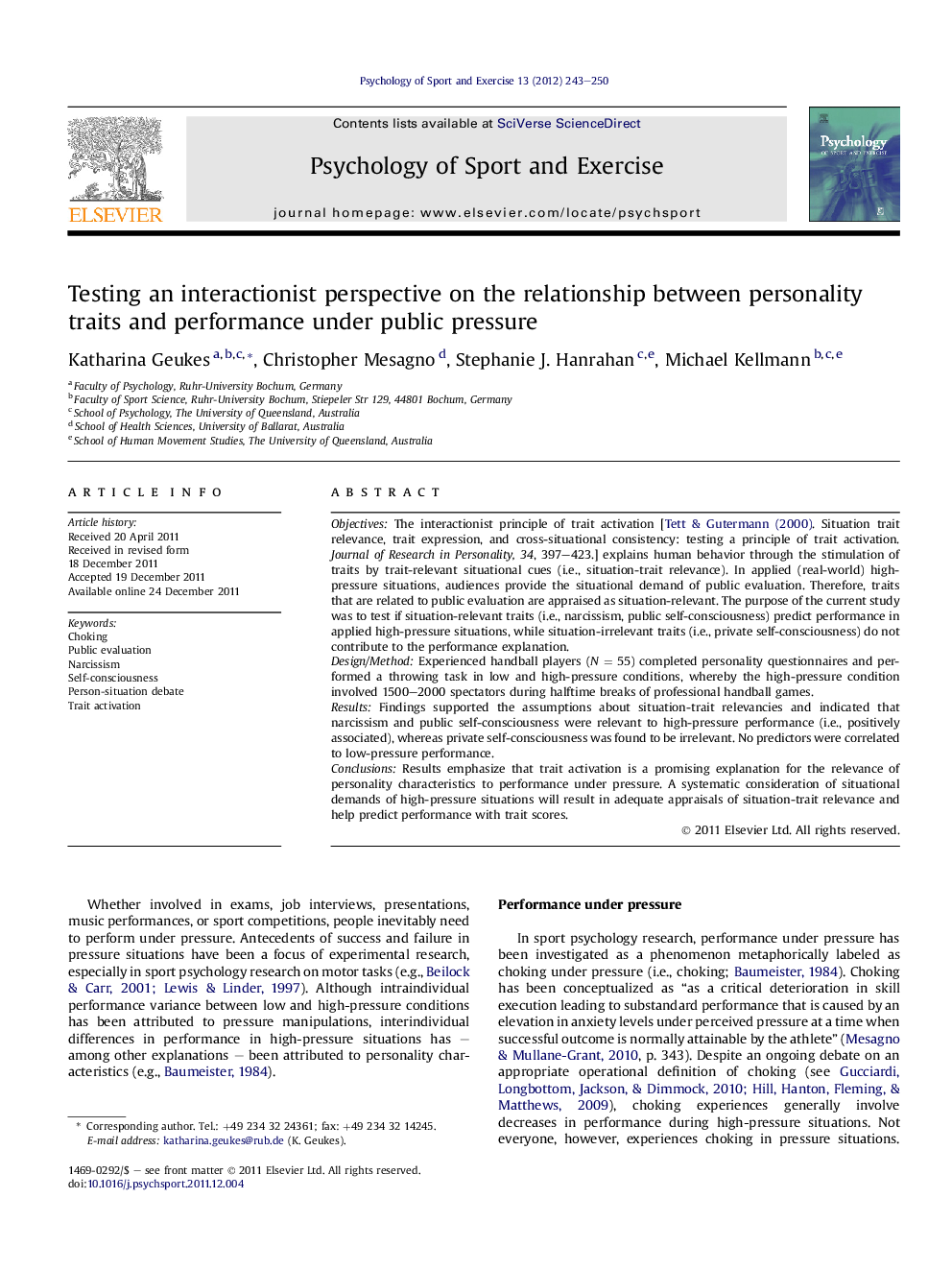| Article ID | Journal | Published Year | Pages | File Type |
|---|---|---|---|---|
| 894754 | Psychology of Sport and Exercise | 2012 | 8 Pages |
ObjectivesThe interactionist principle of trait activation [Tett & Gutermann (2000). Situation trait relevance, trait expression, and cross-situational consistency: testing a principle of trait activation. Journal of Research in Personality, 34, 397–423.] explains human behavior through the stimulation of traits by trait-relevant situational cues (i.e., situation-trait relevance). In applied (real-world) high-pressure situations, audiences provide the situational demand of public evaluation. Therefore, traits that are related to public evaluation are appraised as situation-relevant. The purpose of the current study was to test if situation-relevant traits (i.e., narcissism, public self-consciousness) predict performance in applied high-pressure situations, while situation-irrelevant traits (i.e., private self-consciousness) do not contribute to the performance explanation.Design/MethodExperienced handball players (N = 55) completed personality questionnaires and performed a throwing task in low and high-pressure conditions, whereby the high-pressure condition involved 1500–2000 spectators during halftime breaks of professional handball games.ResultsFindings supported the assumptions about situation-trait relevancies and indicated that narcissism and public self-consciousness were relevant to high-pressure performance (i.e., positively associated), whereas private self-consciousness was found to be irrelevant. No predictors were correlated to low-pressure performance.ConclusionsResults emphasize that trait activation is a promising explanation for the relevance of personality characteristics to performance under pressure. A systematic consideration of situational demands of high-pressure situations will result in adequate appraisals of situation-trait relevance and help predict performance with trait scores.
► The applicability of trait activation to performance under pressure was tested. ► Participants performed a throwing task in a low and a high-pressure condition. ► High-pressure condition involved competition and a large audience (up to 2000). ► Traits linked to public evaluation were assumed to be situation-relevant. ► Narcissism and public self-consciousness predicted high-pressure performance.
